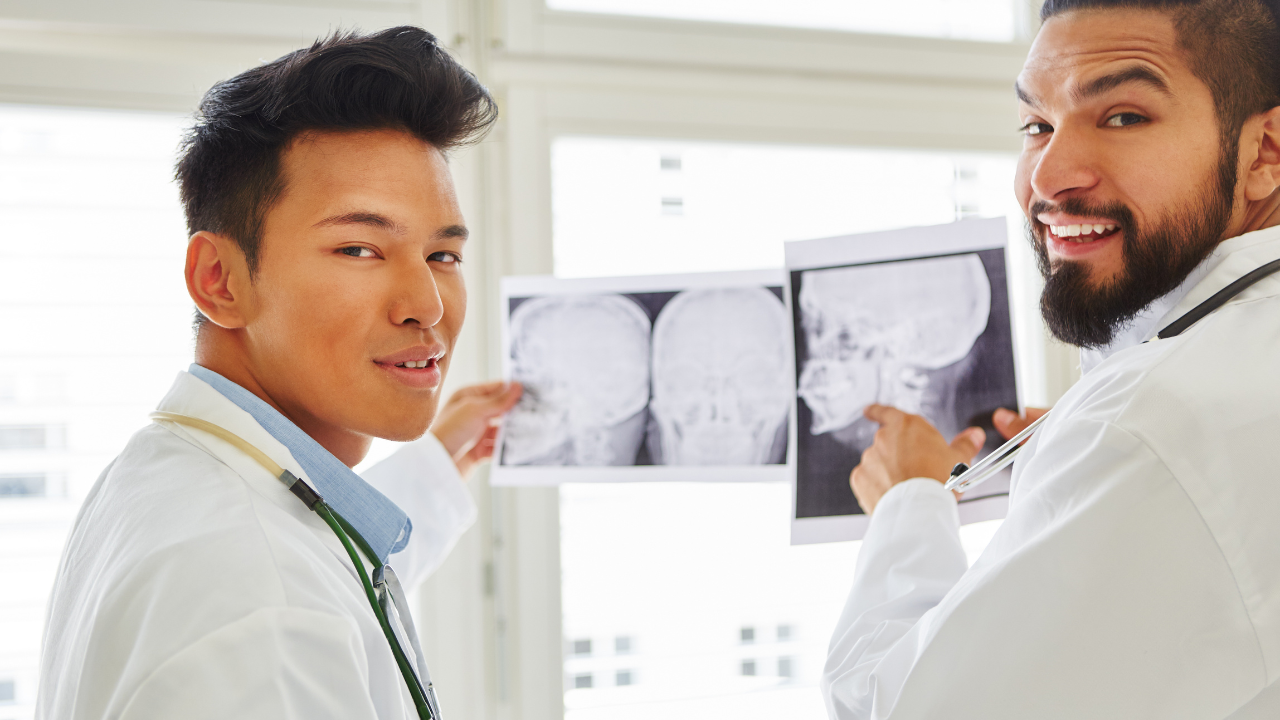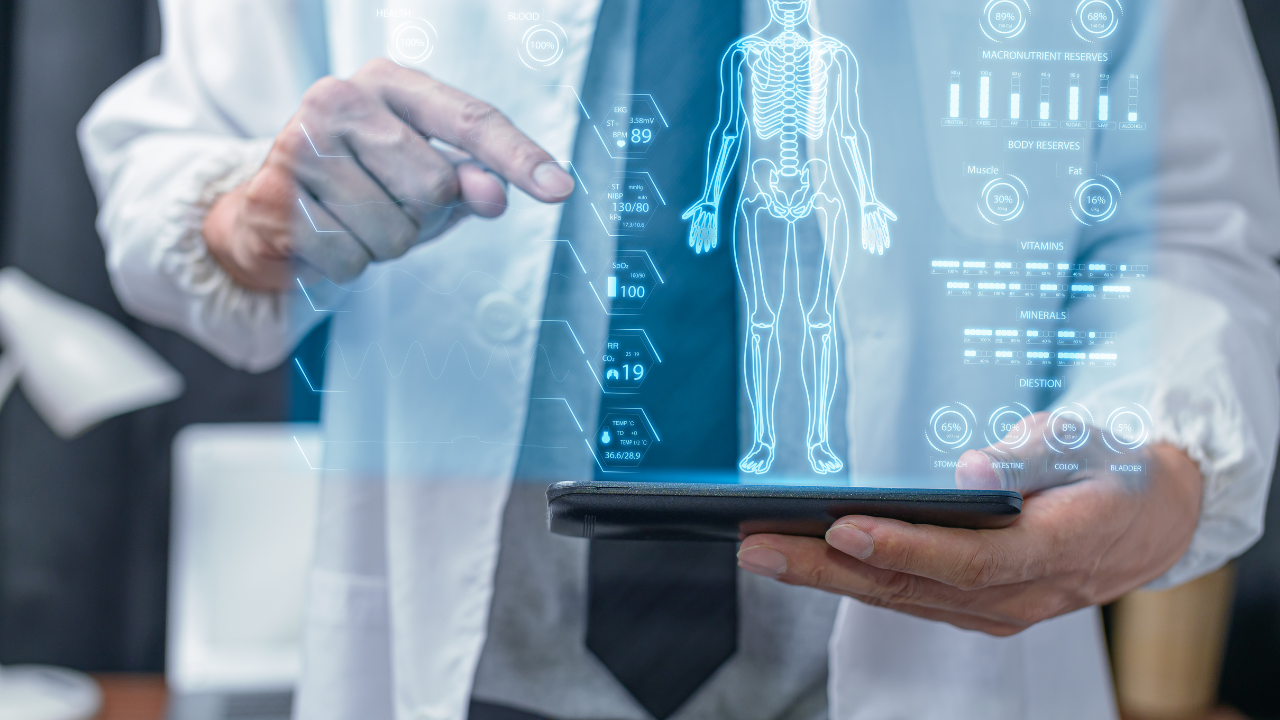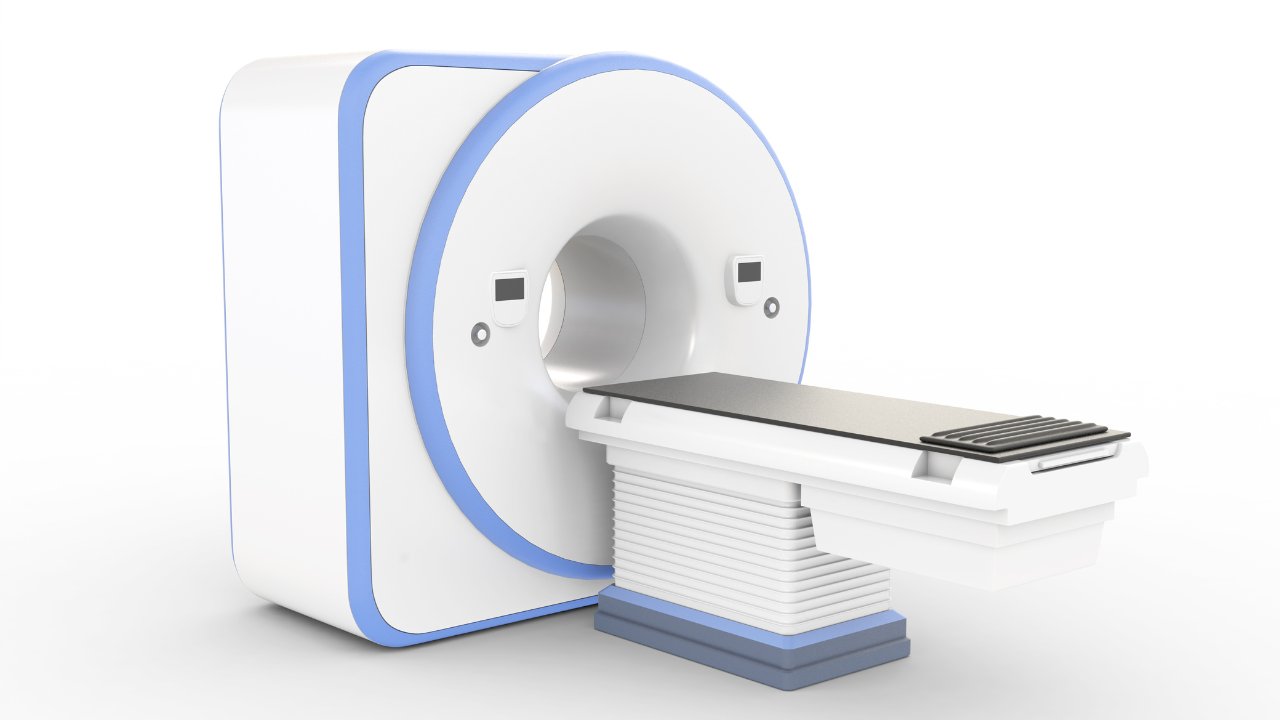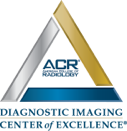Blog and News

Artificial Intelligence is transforming your experience with computed tomography (CT) scans. It enhances resolution, allowing for more precise diagnostics and detecting anomalies at early stages, increasing your chances of successful outcomes. AI also plays a crucial role in dose management, significantly reducing your exposure to radiation by optimizing scan parameters in real-time and improving image clarity even at lower doses. Furthermore, AI speeds up the scanning process, enhancing patient throughput and accelerating diagnostic outputs. Portable AI-driven CT machines increase accessibility, bringing high-quality diagnostics directly to bedside. With each advancement, you get safer, faster, and more accurate medical imaging. Discover how these innovations could transform your next CT scan experience.
Listen to the Article
Key Takeaways
- AI enhances CT scan resolution, allowing for more detailed and precise diagnostics.
- AI-driven dose management minimizes radiation exposure while maintaining image quality.
- Advanced AI algorithms speed up CT scan times, improving patient throughput.
- Noise reduction techniques powered by AI enhance image clarity and reduce unnecessary radiation.
- AI aids in developing portable CT machines, increasing accessibility and efficiency in diagnostics.
High-Resolution Scans Enhanced
Artificial Intelligence significantly enhances the resolution of CT scans, enabling more precise diagnostics and innovative medical applications. By integrating AI with existing imaging technology, you're not just working with raw data; you're seeing a refined interpretation that highlights critical features often missed by the human eye. This capability allows you to detect anomalies at their earliest stages, dramatically increasing the chances of successful patient outcomes.
AI algorithms are designed to learn from vast datasets, continuously improving their ability to discern subtleties in images. For you, this means each scan you interpret is backed by a system that grows smarter with every test. It's like having an ever-evolving digital consultant at your side, dedicated to refining diagnostic accuracy.
Moreover, AI's ability to integrate and analyze data from multiple sources offers a holistic view of a patient's condition. You can correlate CT findings with other medical records and tests, ensuring a comprehensive approach to diagnosis and treatment planning. This isn't just about making better images; it's about providing a more informed, compassionate, and effective service to those who rely on your expertise. AI in CT scans isn't just a technological upgrade—it's a pivotal tool in transforming patient care.
Reducing Radiation With AI
As you explore the integration of AI in computed tomography, it's crucial to focus on how AI-optimized dose management significantly reduces radiation exposure without compromising image quality.
Enhanced image reconstruction techniques, powered by AI algorithms, ensure that even at lower doses, the clarity and detail of scans are markedly improved.
These innovations not only enhance patient safety but also push the boundaries of medical imaging technology.
AI-Optimized Dose Management
Integrating AI into computed tomography (CT) systems enables significantly lower radiation doses while maintaining high image quality. You're at the forefront of this transformative approach, enhancing patient care by minimizing their exposure to potentially harmful radiation.
AI algorithms intelligently adjust the scanning parameters in real-time based on the specific diagnostic requirement and the patient's unique anatomy. This tailored approach ensures optimal imaging with the least radiation necessary.
The result? You're not only safeguarding your patients' health but also setting a new standard in medical imaging. By leveraging AI's potential, you're reducing the cumulative radiation dose across multiple scans, which is particularly crucial for patients requiring frequent imaging.
This innovation marks a significant stride in your commitment to responsible and compassionate care.
Enhanced Image Reconstruction
Enhanced image reconstruction techniques, powered by AI, now enable you to reduce radiation exposure while still capturing detailed diagnostic images. This innovation is crucial for healthcare providers committed to patient safety. AI algorithms optimize the scan parameters in real-time, adjusting the radiation dose without compromising image quality. By intelligently analyzing data, these systems can reconstruct high-quality images from fewer projections, significantly lowering the dose compared to traditional methods.
This approach not only safeguards patients but also empowers clinicians with clearer, more accurate visuals for better diagnosis and treatment planning. You're at the forefront of a technological revolution that enhances care while prioritizing patient health—an essential balance in the pursuit of medical excellence.
Advances in 3D Imaging
As you explore the latest advances in 3D imaging, you'll find that artificial intelligence significantly enhances image resolution, providing clearer and more detailed visuals. These technological strides not only yield faster processing speeds but also facilitate quicker diagnostic outputs without sacrificing quality.
Most importantly, AI's integration into computed tomography has been pivotal in improving diagnostic accuracy, ensuring more reliable and precise patient assessments.
Enhanced Image Resolution
How does artificial intelligence elevate the clarity and detail of 3D imaging in computed tomography scans?
By integrating AI-driven algorithms, CT scans can now produce high-resolution images that reveal minute details in unprecedented clarity. This enhancement allows for more precise diagnostics and better planning of treatment strategies, crucial for serving patients effectively.
AI algorithms excel in pattern recognition, improving image quality even from lower-dose scans, which reduces patient exposure to radiation. Moreover, these sophisticated models can reconstruct complex three-dimensional images from multiple two-dimensional scans, providing a holistic view of the area of interest.
This capability not only supports medical professionals in making more informed decisions but also enhances the care provided to patients, ultimately contributing to better health outcomes.
Faster Processing Speeds
Artificial intelligence significantly accelerates the processing speeds of 3D imaging in computed tomography scans, enabling quicker diagnostics and improved workflow efficiency. Here's how this impacts your ability to serve patients effectively:
- Reduction in Scan Time: AI algorithms optimize data acquisition, slashing the time it takes to complete a scan. This means less waiting for patients and faster commencement of treatment plans.
- Streamlined Data Analysis: AI excels in handling vast datasets swiftly. You'll access processed images quicker, allowing for timely decision-making in critical care scenarios.
- Enhanced Resource Management: Faster processing frees up imaging equipment and personnel, enabling a higher throughput of patient scans and better utilization of hospital resources. This not only improves patient outcomes but also enhances your facility's capacity to care for more individuals efficiently.
Improved Diagnostic Accuracy
Enhanced diagnostic accuracy in 3D imaging, driven by artificial intelligence, offers you more precise assessments and earlier detection of anomalies in computed tomography scans.
This breakthrough technology harnesses advanced algorithms that analyze vast amounts of data with exceptional speed and accuracy, allowing you to pinpoint issues with unprecedented clarity.
The AI models are trained on diverse datasets, improving their ability to discern subtle variations in tissue density and structure, which often elude conventional imaging techniques.
Dual-Energy CT Improvements
Dual-Energy CT technology frequently elevates diagnostic accuracy by differentiating between materials of similar densities. As you delve deeper into the capabilities of Dual-Energy CT (DECT), you'll discover it's not just about seeing more; it's about understanding better. This technology harnesses two distinct X-ray energy spectra, allowing clinicians to characterize tissues and materials with unprecedented precision. This is pivotal in fields such as oncology, where distinguishing between benign and malignant lesions can significantly impact patient management and outcomes.
Here are three pivotal improvements brought about by AI in DECT:
- Material Decomposition: AI algorithms excel in separating images into different material-specific data sets, enhancing the ability to identify and quantify substances like iodine, calcium, and uric acid. This is crucial for assessing vascular diseases and detecting kidney stones.
- Virtual Non-contrast Enhancement: AI supports the generation of virtual non-contrast images from contrast-enhanced scans. This not only reduces radiation exposure by eliminating the need for multiple scans but also aids in clearer, more accurate assessments.
- Artifact Reduction: Advanced AI techniques minimize artifacts that typically arise from hard materials such as metal implants. This improvement enhances image clarity, allowing for more precise diagnoses without the distractions of image noise.
Harnessing these advancements, you're not just conducting scans; you're providing a deeper level of care, tailoring diagnostics and treatments to meet the unique needs of each patient.
Accelerating Scan Times
Speeding up scan times significantly improves patient throughput and efficiency in medical imaging processes. By integrating artificial intelligence (AI), you're not just streamlining operations; you're also enhancing patient care. AI algorithms optimize scan protocols, predicting the optimal balance between image quality and speed. This means you can conduct more scans in less time without compromising diagnostic accuracy.
AI's role in accelerating scan times is multifaceted. One key aspect is its ability to rapidly analyze and adjust imaging parameters in real-time. For example, by assessing patient data and previous images, AI can determine the minimum number of slices necessary to achieve diagnostic goals, thus reducing total scan time. Furthermore, AI-driven systems learn from vast datasets, continuously improving their efficiency and adaptability to new scenarios.
This acceleration doesn't just benefit the patients who experience less discomfort and shorter wait times. It also allows you and your team to focus more on patient interaction and care, rather than manual settings adjustments. With AI, you're equipped to address patient needs more effectively, ensuring a smoother workflow and fostering a more compassionate environment. By adopting these advanced technologies, you're not only staying at the forefront of medical imaging but also prioritizing the well-being of those you serve.
Development of Portable Machines
While AI continues to streamline and expedite computed tomography scans, another groundbreaking advancement is the development of portable machines that bring diagnostic capabilities directly to the patient's bedside. This innovation not only enhances the efficiency of medical diagnostics but also significantly improves patient care by facilitating immediate imaging assessment, which is crucial in emergency situations or for those unable to easily access traditional CT facilities.
Here are three key impacts of portable CT machines:
- Increased Accessibility: You can now use these devices in remote locations, underserved communities, and in various clinical settings, ensuring that all patients receive timely and high-quality diagnostic care.
- Reduced Transportation Risks: Moving patients, especially those in critical condition, can pose significant health risks. Portable CT scanners eliminate the need for potentially hazardous transports to radiology departments.
- Faster Diagnosis and Treatment: Immediate scanning capabilities at the bedside can lead to quicker diagnosis, allowing for rapid initiation of treatment. This is particularly vital in acute cases such as strokes or internal injuries, where time is often the deciding factor in recovery outcomes.
These portable units aren't just tools; they're a leap forward in medical technology, embodying the marriage of AI and human-centered design to serve communities better and save lives.
Noise Reduction Techniques
In the realm of computed tomography, advanced noise reduction techniques are essential for enhancing image clarity and reducing patient exposure to radiation. As you delve into the technicalities of these methods, you'll find that AI algorithms play a pivotal role. These algorithms, trained on vast datasets, can differentiate between noise and crucial diagnostic information with remarkable precision. This capability allows for lower radiation doses by minimizing the need for repeat scans caused by unclear images.
You're likely aware that traditional filtering methods often compromise between image quality and effective noise reduction. However, AI-driven techniques adjust dynamically, maintaining high-quality images while aggressively reducing noise. This isn't just technical improvement; it's a transformative step towards safer, more accurate diagnostic processes. Imagine applying these advanced algorithms in your practice. You could offer clearer, more detailed images to your patients while reducing their exposure risks— a significant stride in patient care.
Moreover, ongoing innovations in AI promise even greater enhancements. Researchers are continually refining these algorithms to be more adaptive and sensitive to diverse clinical scenarios. By staying informed and adopting these cutting-edge tools, you're not only advancing your technical arsenal but also significantly elevating the standard of care provided to those who entrust their health to you.
Frequently Asked Questions
How Does AI Impact the Training of Radiologists?
AI is revolutionizing radiologist training, acting as a high-tech coach that enhances diagnostic skills. It accelerates learning, offers precise feedback, and ensures you're equipped to deliver top-tier care to those in need.
What Are the Ethical Concerns With AI in CT Scans?
You're facing ethical concerns with AI in CT scans, including privacy issues, data misuse, and biased algorithms. Addressing these ensures patient welfare and trust in this innovative, rapidly evolving medical technology field.
Can AI in CT Scans Help Reduce Healthcare Costs?
You're hitting the nail on the head: AI in CT scans can indeed slash healthcare costs by enhancing scan efficiency, reducing repeat procedures, and streamlining diagnosis processes, bringing high-tech solutions to the forefront.
How Do Patients Perceive AI Involvement in Their Medical Imaging?
Patients often view AI in medical imaging as a promising advance, appreciating faster, more accurate diagnoses. However, some may feel uneasy about reduced human oversight, valuing personal interaction and expert opinions in their care.
Are There Any Ai-Related Privacy Issues in CT Scanning?
In ye olde realm of CT scanning, AI introduces privacy concerns, primarily data breaches and unauthorized access. You must ensure robust safeguards are in place to protect patient information while harnessing AI's potential.






